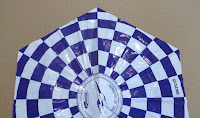I saw this picture on Facebook.
Apparently NASA held a Miss NASA Beauty Pageant from 1968 through 1973. The winner was featured in promotional material and was a good will ambassador. Miss NASA may have been an inspiration to one model rocket company.
In 1975 I went to my first NARAM, held here in Orlando Florida. I got to know the Centuri representatives pretty well by the end of the week.
Bob DelPrincipe shared a Centuri photo album with some model designs and past magazine advertisements. I recognized some of the ads, but apparently a few never made it to press.
One ad had a young model with a perplexed look on her face standing next to some rocket outline silhouettes. Her voice bubble read something like: "They won't even show me the newest designs - and I'm Miss Centuri Rockets!"
Of course I asked: "What the heck is this?"
Bob explained - This promotion was developed when Centuri president Lee Piester was away on vacation. He returned to Phoenix and was shown the Miss Centuri Rockets ad series. He immediately shot it down. Obviously not something he wanted to see in the pages of Boy's Life magazine.



















































